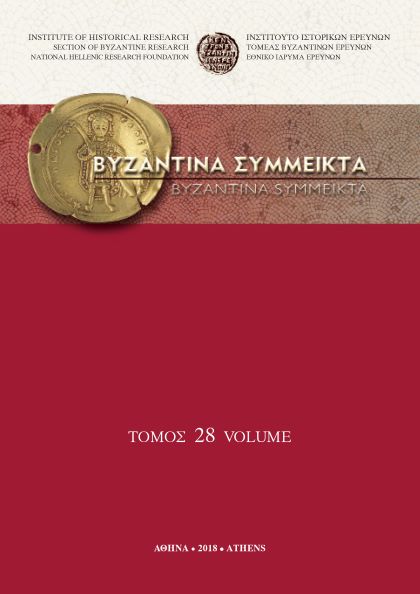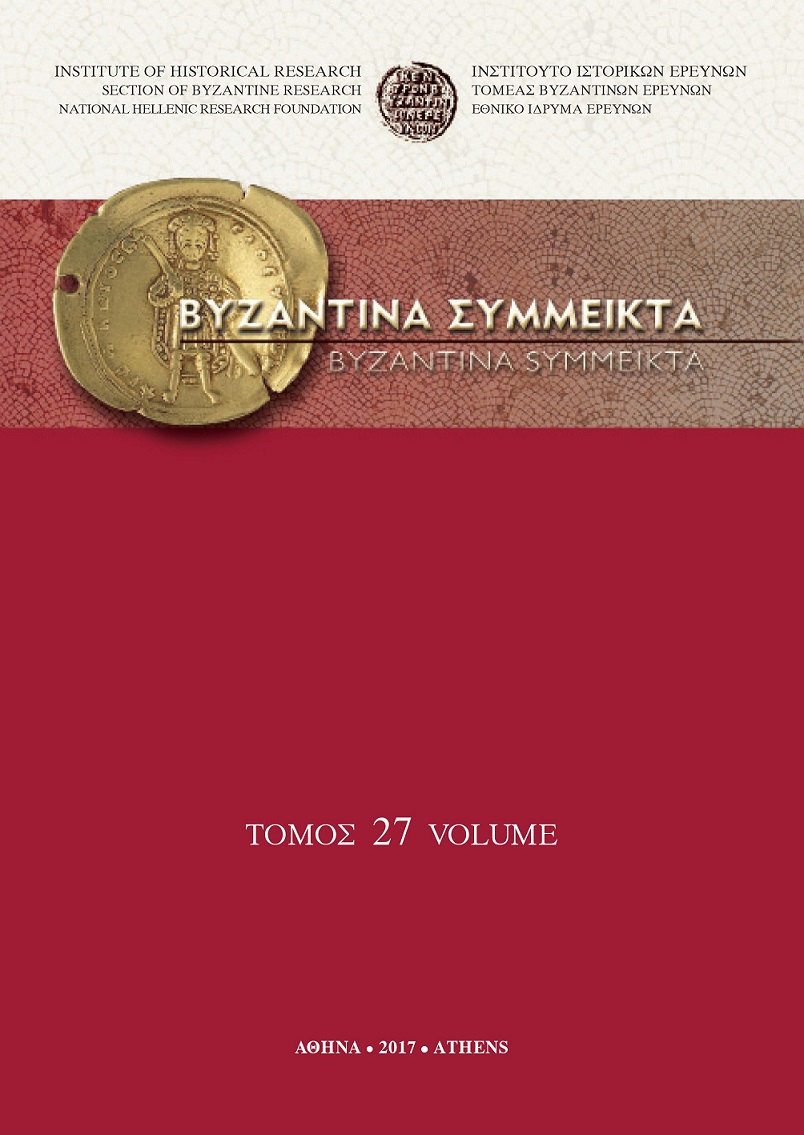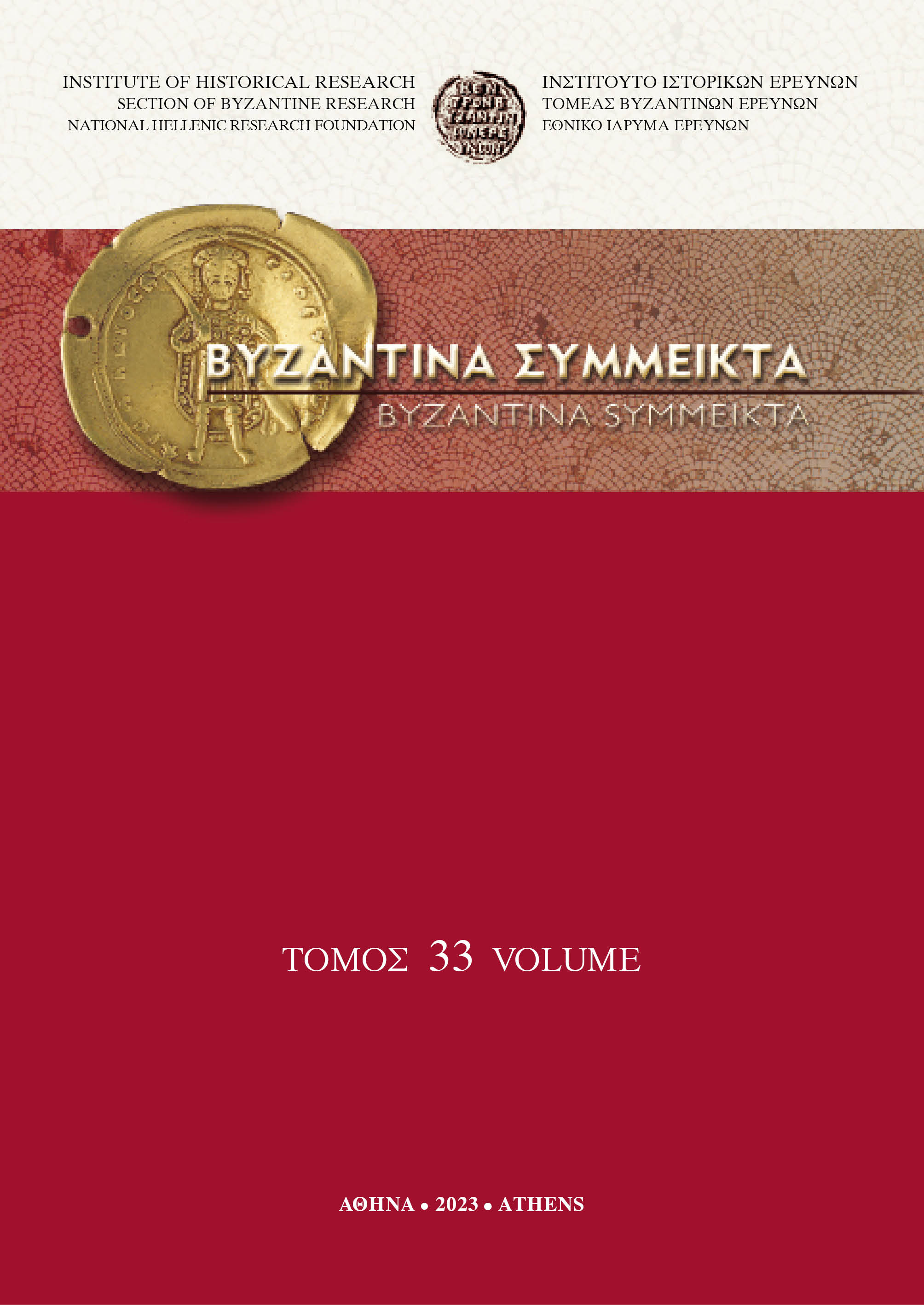Μαρτυρίες ιστορικών πηγών και αρχαιολογικών ευρημάτων για μια μορφή "βιολογικού" πολέμου με τη χρήση των μελισσών στο Βυζάντιο

Περίληψη
EVIDENCE FROM WRITTEN SOURCES AND ARCHAEOLOGICAL FINDS FOR A TYPE OF “BIOLOGICAL WAR” USING BEES IN BYZANTIUM
The use of animals as a military weapon, particularly the sting of bees, doesn’t consist an invention of the Middle Ages. It is traced as early as the biblical times. First references are recorded during the Roman campaigns in the region of Pontus, while the lethal biological weapon of bees was further developed as a method of defense and attack mainly in the West, and especially during the Crusaders’ sieges.
In all probability, Byzantium employed biological weapons, including bees,following roman practices. Literary sources from Patristic to historiographical texts and Saints’ Lives refer to the effect of smoke on bees, in a parabolic manner, and recognize the bees’ sting as a devious device against real enemies (e.g.barbarians) and invisible opponents (demons). Byzantine writers applauded the use of such insidious methods of warfare, on the other hand, the admiration of a victory, based on vigour and bravery was highly appreciated.
Archaeological finds which could shed more light to this practice are scarce but indicative. Cylindrical earthenware vessels were the most common type of early Byzantine beehives, identified by the shallow incisions in the inner surface of the walls. Four intact samples of this type of pottery were found inside a tower of the Hexamilion Fortress at Isthmia (6th century), one of the most important military complexes of Justinian period. The unexpected location and the specific artifact types suggest alternative interpretations for their use, among them their possible military use.
This paradox aspect of biological war did not die out, instead it inspired much more elaborated, devious methods of warfere in the aftermath of the Middle Ages.
Λεπτομέρειες άρθρου
- Πώς να δημιουργήσετε Αναφορές
-
ΓΕΡΜΑΝΙΔΟΥ Σ. (2013). Μαρτυρίες ιστορικών πηγών και αρχαιολογικών ευρημάτων για μια μορφή "βιολογικού" πολέμου με τη χρήση των μελισσών στο Βυζάντιο. Βυζαντινά Σύμμεικτα, 23, 91–104. https://doi.org/10.12681/byzsym.1046
- Τεύχος
- ΒΥΖΑΝΤΙΝΑ ΣΥΜΜΕΙΚΤΑ 23
- Ενότητα
- Άρθρα

Αυτή η εργασία είναι αδειοδοτημένη υπό το CC Αναφορά Δημιουργού – Μη Εμπορική Χρήση – Παρόμοια Διανομή 4.0.
Οι συγγραφείς των άρθρων που δημοσιεύονται στα ΒΥΖΑΝΤΙΝΑ ΣΥΜΜΕΙΚΤΑ διατηρούν τα δικαιώματα πνευματικής ιδιοκτησίας επί των άρθρων τους, δίνοντας στο περιοδικό το δικαίωμα της πρώτης δημοσίευσης. Άρθρα που δημοσιεύονται στα ΒΥΖΑΝΤΙΝΑ ΣΥΜΜΕΙΚΤΑ μπορούν να χρησιμοποιούνται ελεύθερα, χωρίς δικαίωμα τροποποίησης (δημιουργία παράγωγου έργου) με αναφορά στο συγγραφέα και στην πρώτη δημοσίευση για μη κερδοσκοπικούς σκοπούς(άδεια Creative Commons 4.0). To Εθνικό Ίδρυμα Ερευνών διατηρεί το δικαίωμα να δημοσιεύει, να αναπαραγάγει, να παρουσιάζει στο κοινό, να διανέμει και χρησιμοποιεί άρθρα που δημοσιεύονται στα ΒΥΖΑΝΤΙΝΑ ΣΥΜΜΕΙΚΤΑ σε οποιοδήποτε μέσο και μορφή είτε μεμονωμένα είτε ως μέρη συλλογικών έργων, για όλο το χρόνο διάρκειας προστασίας της πνευματικής ιδιοκτησίας και για όλες τις χώρες του κόσμου. Αυτό περιλαμβάνει ενδεικτικά και όχι αποκλειστικά, το δικαίωμα δημοσίευσης των άρθρων σε τεύχη του περιοδικού ΒΥΖΑΝΤΙΝΑ ΣΥΜΜΕΙΚΤΑ, αναπαραγωγής και διανομής μεμονωμένων αντιγράφων των άρθρων, αναπαραγωγής ολόκληρων των άρθρων σε άλλη έκδοση του ΕΙΕ, και αναπαραγωγής και διανομής των άρθρων ή περίληψης αυτών με χρήση πληροφορικού συστήματος αποθετηρίου.





